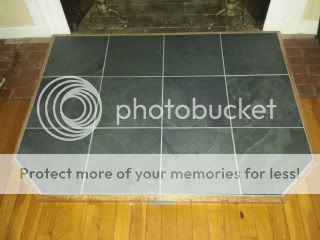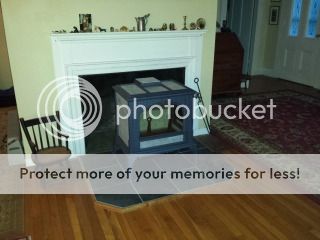I am starting my hearth for the new Keystone. It is a simple affair, scrap redwood planks to give it the height and the usual hardiboard and topped with slate tiles. I was going to rabbet the edges of the wood, seal them and use that as my edge trim [or, border some might call it]. Then I thought, wait, that trim would be flammable. So I need to use something else. I thought about just leaving a half-inch space around the edges so I could use grout, and I may still do so [run the grout at about a 45-deg angle from the wood up to the edge of the tile]. Any other ideas out there? I don't want to use shiny aluminum or anything like that.
Finishing off a hearth
- Thread starter SteveKG
- Start date
-
Active since 1995, Hearth.com is THE place on the internet for free information and advice about wood stoves, pellet stoves and other energy saving equipment.
We strive to provide opinions, articles, discussions and history related to Hearth Products and in a more general sense, energy issues.
We promote the EFFICIENT, RESPONSIBLE, CLEAN and SAFE use of all fuels, whether renewable or fossil.



